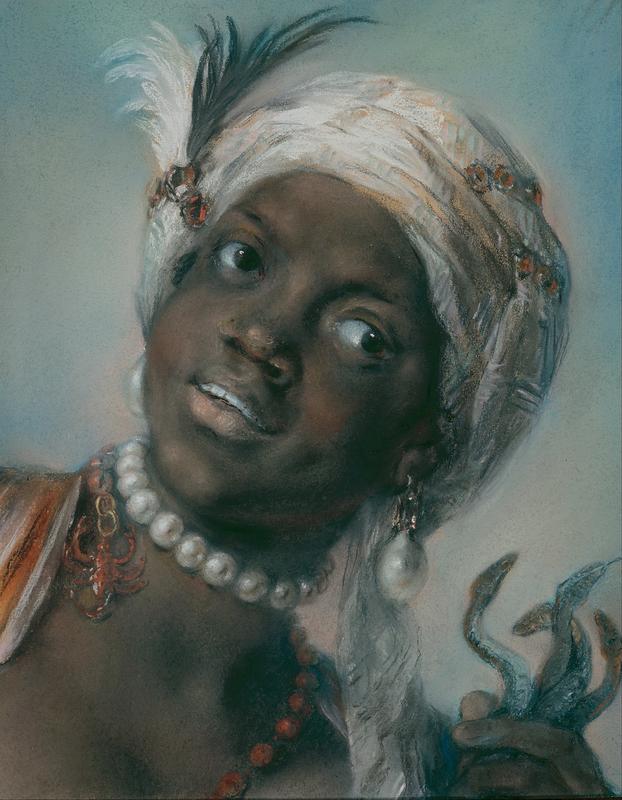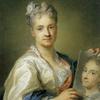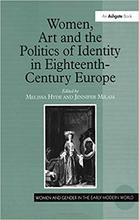More about Africa
- All
- Info
- Shop

Contributor
Apparently, nobody knows when Carriera painted Africa, so we have to think like detectives to connect it to her other work.
On September 27, 1705, Carriera gained admission to Rome's Accademia di San Luca, the school which also produced Bernini and Romanelli. In 1721, she went to Paris, where she hung out with her friends, Rigaud and Watteau, producing several portraits. Like Levina Teerlinc, Carriera gained a following for her miniatures, mostly depicting women, and she also established herself as a master of pastels. Were the women of those days great miniaturists because the men's egos couldn't tolerate large-scale paintings by women? Like her fellow Venetian painter, Canaletto, Carriera sold work to Joseph Smith, the British ambassador in Venice. Some of Carriera's earliest profitable work came in painting snuff boxes. As you know, of course, snuff is so much better if its box has a painting on it.
Carriera may be the greatest of the Rococo painters. Take a look, for example, at her subtle and gorgeous pastel Air (c. 1744, Staatliche Kunstammlungen Dresden), part of her Four Elements series, a theme also used by Arcimboldo. It is terribly sad that many of her paintings were destroyed in the bombing of Dresden.
The facial features of the portrait Africa are not grotesque or exaggerated, suggesting that Carriera had a live model for the pastel drawing, and that she cared about physical accuracy. The model's outfit, however, is a typical example of "exoticism," which was the critic's term for a kind of theatrical, campy way of portraying people who were not European, and which reached its height with the work of Sargent, Moreau, and many others. Like a shot of absinthe or a synthetic drug, the figure of the African becomes the "surrogate and enabler," allowing Carriera to experiment with a fanciful costume, and enabling her patrons and viewers to imagine the supposedly vast cultural gap between their own homelands and those on the other side of the Mediterranean.
By today's standards, the fact that the woman in the portrait is holding a fresh bouquet of live snakes, tongues flailing, is enough to make it a cultural embarrassment, just another skeleton in the closet of the "Holy Roman Empire" art world. And yet, aside from the snakes and gaudy outfit, this is one of those rare portraits of Africans by an early European artist that, like those of Rembrandt, actually looks like a real person, not an Asterix cartoon. Toni Morrison asks, "In what ways does the imaginative encounter with Africanism enable white writers to think about themselves?” The same inquiry can be made about this portrait of a nameless woman.
Sources
- Carriera, Rosalba. Journal de Rosalba Carriera pendant son séjour à Paris en 1720 et 1721: Publié en italien par Vianelli. Traduit, annoté et augm. dùne biogr. et de documents inédits sur les artistes et les amateurs du temps. Paris: Techener, 1865.
- Cheney, Liana. Essays on women artists: "the most excellent". Lewiston, NY: Edwin Mellen, 2003.
- Lee, Hyejin. "Rosalba Carriera’s Four Elements series." reveries of a dixhuitièmiste, Aug. 8, 2015, https://reveries18e.wordpress.com/2015/08/03/rosalba-carrieras-four-ele….
- Morrison, Toni. Playing in the Dark. New York: Knopf Doubleday Publishing Group, 2007.












